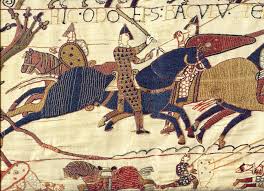Exploring the Bayeux Tapestry and Its Historical Significance

Introduction
The Bayeux Tapestry is an extraordinary piece of art that not only showcases the talent of medieval artisans but also serves as a pivotal historical document. Created in the 11th century, this embroidered piece depicts the events leading up to the Norman Conquest of England in 1066. Its relevance remains significant as it offers insight into the political and social dynamics of the time, making it a subject of ongoing study and admiration.
The Creation and Description of the Tapestry
The tapestry measures approximately 70 metres in length and 50 centimetres in height, featuring over 600 human figures and numerous animals. The craftsmanship, predominantly attributed to Anglo-Saxon artisans, is intricate and detailed, portraying scenes such as King Edward the Confessor’s death, Harold Godwinson’s oath to William, and the Battle of Hastings.
The narrative is presented in a continuous frieze format, allowing viewers to follow the storyline seamlessly. Each segment is meticulously designed to tell a part of the larger narrative, making it not just a work of art but a visual storytelling medium that communicates the history of the Norman invasion.
Historical Significance
The Bayeux Tapestry is vital in understanding the events of 1066, a turning point in English history. As a primary source, it provides valuable context and perspective on the Norman Conquest, which significantly transformed the country’s governance, culture, and society. The tapestry not only highlights key figures and events but also reflects the values and norms of the time, showcasing the blend of English and Norman cultures that arose from the conquest.
The tapestry was commissioned by Bishop Odo of Bayeux, William the Conqueror’s half-brother, which adds another layer of political commentary. It serves both as a celebration of Norman victory and a message of power designed for a broad audience.
Current Status and Preservation Efforts
Today, the Bayeux Tapestry is preserved in Bayeux, France, and attracts thousands of visitors each year. However, its preservation is a subject of concern due to the wear and tear caused by exposure to light and humidity. Ongoing conservation efforts aim to protect this invaluable piece of history for future generations. Plans have also been discussed for a loan of the tapestry to the UK, sparking debates over cultural heritage and ownership.
Conclusion
The Bayeux Tapestry stands as not only an artistic masterpiece but also as a crucial document of historical importance. Its detailed representations provide a vivid portrayal of a significant moment in history and continue to captivate scholars and the public alike. As preservation efforts continue, the tapestry will remain an essential artefact for understanding the complexities of the Norman Conquest and its lasting impact on English history.








